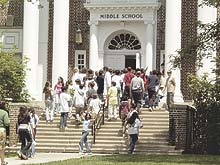Vanished Places: The Fahys Wood Bridge
Vanished Places: The Fahys Wood Bridge
The Fahys Wood Bridge, built in 1892, connecting Sag Harbor and North Haven, collapsed in the water in 1900 due to the ravages of terado (shipworm). A replacement bridge with a steel trestle and a swing center span was erected in 1900. It was torn down in 1934 and replaced with a steel-reinforced concrete span on concrete piles, which was again reinforced in 1975.


